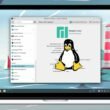How to Install Kali Linux ARM64 Desktop Edition On Apple Silicon Macs including M1 M2 M3 and M4 Using Virtual Box..
Prerequisites
Before proceeding, ensure you have at least 40GB of free space on your macOS system.
Download VirtualBox & Kali Linux ISO
- Download VirtualBox from the official website. For Apple Silicon Macs, select the ARM64 version.
- Download the VirtualBox Extension Pack to enable additional features.
- Download Kali Linux ARM64 ISO from the official Kali website. The latest version at the time of writing is Kali 2024.4.
Once downloaded, place all files in an easily accessible location.
Install VirtualBox & Extension Pack
- Double-click the VirtualBox DMG file.
- Open the installer and follow the on-screen instructions.
- Then Install the VirtualBox Extension Pack by double-clicking the file.
Create a Kali Linux Virtual Machine
- Click New in VirtualBox and name the VM.
- Set Type to Linux, SubType to Debain and Version to Debian 64 Bit.
- Allocate at least 4GB RAM and 4 CPU cores for smooth performance.
- Create a virtual hard disk of at least 20GB.
Optimize Virtual Machine Settings
- Open VM Settings → Display → Increase Video Memory to the maximum.
- Set Graphics Controller to VMSVGA (do not enable 3D acceleration).
- Go to Storage, select Empty, Click Drive Icon from the right and import the Kali ARM64 ISO.
- Click OK to save changes.
Start Kali Linux Installation
- Click Start and select Graphical Install.
- Follow the installation prompts:
- Select Language, Location, and Keyboard Layout.
- Set a Hostname (leave Domain Name empty).
- Create a User Account & Password.
- Choose Use Entire Disk → Select Virtual Disk → Finish Partitioning.
- Choose a Desktop Environment (XFCE is recommended for better performance).
- Complete the installation and reboot.
Manually Boot Kali from UEFI Shell
Unfortunately virtual box cannot load the GRUB bootloader automatically, so you need to manually provide a location of GRUB each time you start the VM.
- Inside the UEFI shell, type
mapto list available drives. - Identify the Kali Linux partition (usually
FS0). - type:
fs0:EFI\kali\grubaa64.efiand press Enter to boot into Kali
Update APT Source List
Run the following command to update package list:
sudo apt updateInstall VirtualBox Guest Additions
To enable full-screen resolution and additional features:
- Open Terminal & Install Linux headers:
sudo apt install -y linux-headers-generic
- In VirtualBox, go to Devices → Insert Guest Additions CD Image.
- Open the CD in the file manager and copy the contents to your Documents folder.
- Using the Terminal navigate into Documents directory
- (
cd ~/Documents)
- (
- Type
lsto see the contents - Change file permissions
chmod +x VBoxLinuxAdditions-arm64.run
- Execute the installer
sudo ./VBoxLinuxAdditions-arm64.run
- Restart the VM to apply changes.
Enable Display Scaling
If the interface appears too small:
- Open Settings Manager.
- Enable Kali 2X HiDPI Mode.
Performance
Since VirtualBox lacks 3D acceleration on Apple Silicon, animations and transitions may be slower. However, Kali runs smoothly for general tasks and application usage.
Bonus: Deleting Kali Linux VM
If you no longer need Kali:
- Shut down the VM.
- Right-click the VM in VirtualBox Manager and select Delete.
Final Thoughts
That’s pretty much, this is how you can install Kali on Apple Silicon Macs using VirtualBox for free.








